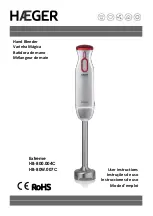
iLive
Fixed Format Getting Started Guide
13
AP7141 iss.6b
Step 3 – A few things to know before starting
Before working with the iLive familiarise yourself with its control layout and operating principles.
Two important keys
SEL
- Select the channel processing. View and adjust the
parameters for that channel. Within the processing section
use these keys to open individual processing blocks on the
screen, or press and hold to send the signal at that point to
the PAFL system. These keys are also used when copying
or resetting processing parameters, and for setting up
ganging, name & colour and strip layout.
MIX
- Select the mix you want to work with. View and adjust
the assignments, pre/post settings, levels and pan. There is
an option to choose to use either fader or rotary sends for
each Aux or Matrix mix. These keys are also used when
assigning and copying mix parameters, and setting talkback
assignments, channel safes and more.
Fader Strip LCD display
TouchScreen
The TouchScreen provides access to the FX, setup
and utility functions and presents an alternative
graphical view of the channel processing
parameters.
Touch a parameter box and change its value using
the
screen encoder
. To return to the root menu for
any screen mode touch the Return button.
Note
- To display the channel parameters on the
screen make sure all the mode keys next to the
screen are turned off, or press the CHANNEL
PROCESSING key. A selected screen key overrides
the parameter view.
Note
-
Do not leave the screen in
NAME/COLOUR
,
MIXRACK
or
SURFACE
setup
mode as these change the function of the
SEL
keys.
MUTE
SEL
MIX
MIX
PAFL
NAME
IP
DCA
AUX
FADER
CH
PAN
L
R
LEV
STEREO
PRE
SAFE status
Normal mode = SCENE safe
Solo-in-place mode = SIP safe
Strip type
Mono or stereo
IP = Input channel
IP FX = FX ‘short’ return
GP = Group master
AUX = Aux send master
MAIN = Main mix master
MTX = Matrix master
DCA = DCA master
WDG = Wedge master
IEM = IEM master
Name
5 character, user defined.
Shows DSP channel number or
socket position in ALT VIEW
DCA status
On = The channel is assigned to one or more DCA groups.
Flashing = Channel is muted by DCA groups. A red LED also
lights.
Rotary setting
Normal = PAN (fader mix), LEV (rotary mix)
Shifted = LEV, PAN, BLEND, SUB or M
CH FADER
Turns on when the strip fader is
the channel or master fader.
Turns off when the fader is a
send level control.
ON
The channel is assigned
to the current mix or
DCA.
PRE
The channel AUX or MTX
send is pre-fader. Off =
post-fader.
Current MIX type
Indicates the currently selected
fader or rotary mix type.
GP, FX, AUX, MTX














































